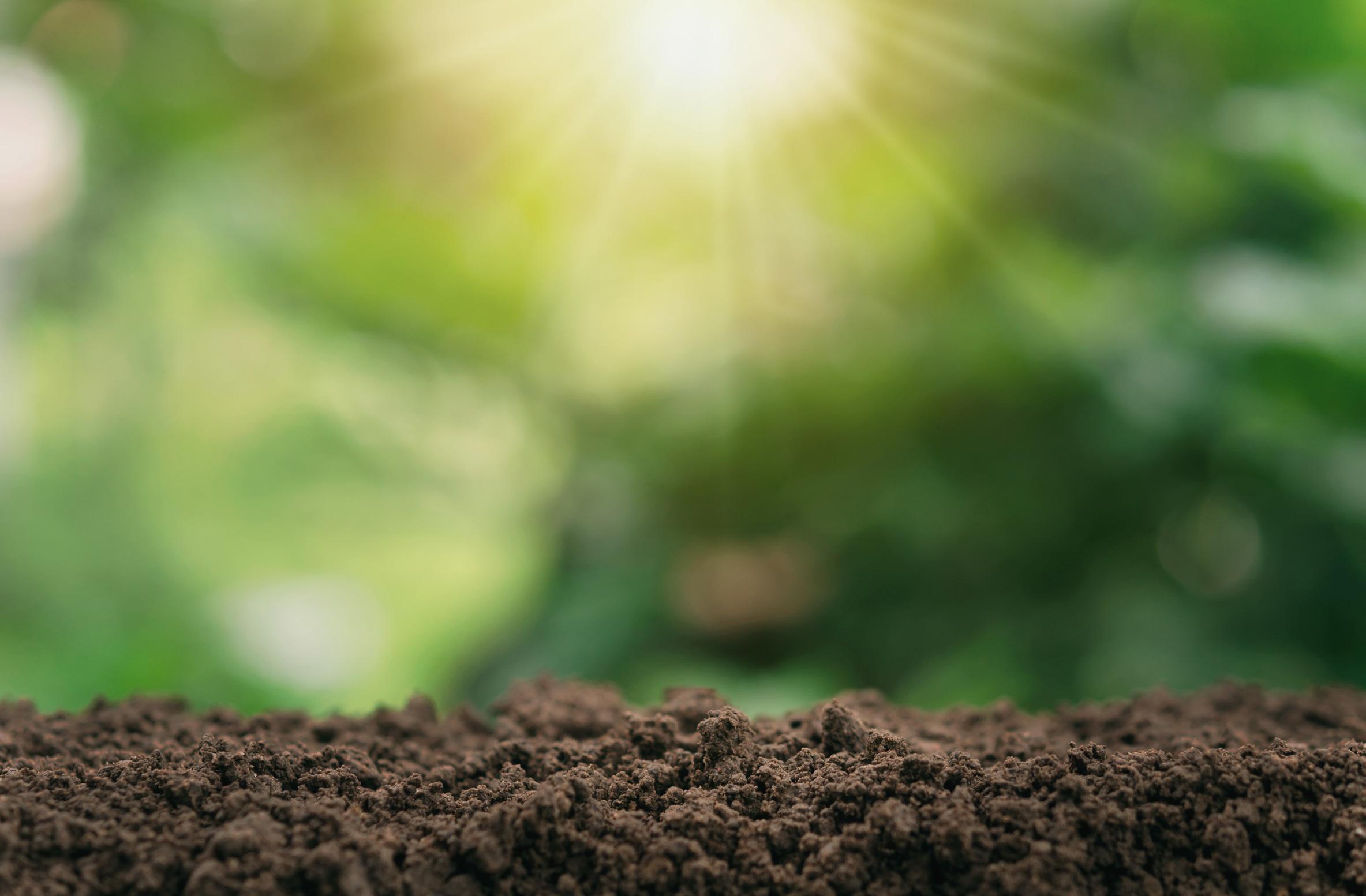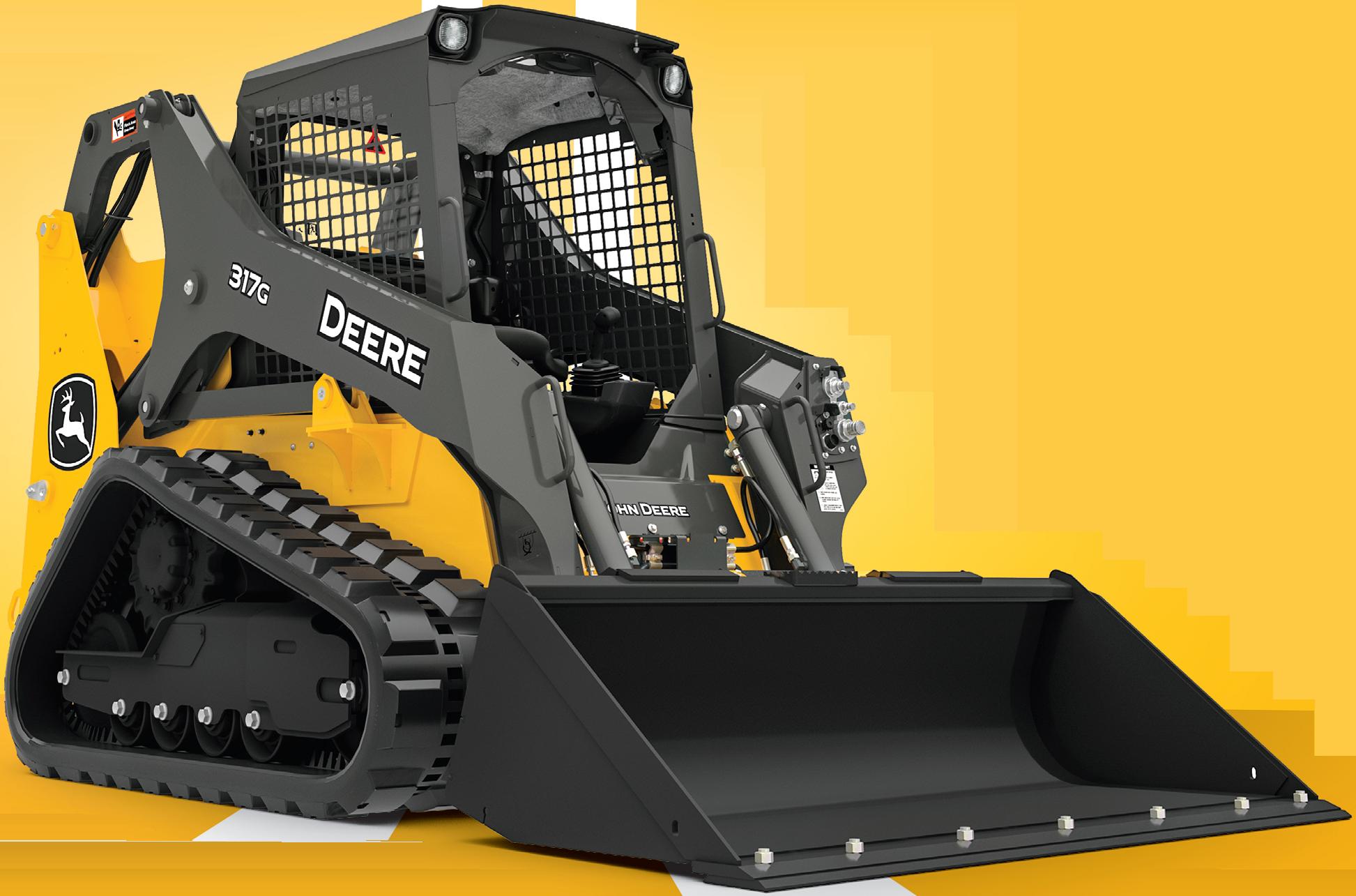
6 minute read
LAWN CARE | KEY BENEFITS OF USING SOIL AMENDMENTS
KEY BENEFITS
OF USING SOIL AMENDMENTS
While healthy soil is critical to the success of most landscape projects, most soils are underamended with organic matter, leading to a host of challenging issues. Here’s how amendments can offer solutions to soils lacking organic matter.
Most landscape projects require soil conditioning and fertilization. Fertilizing is an additive process based on need by identifying the missing nutrient and adding it to the soil. Soil amendments correct a problem or condition that already exists in the soil. Typically, soil amendments address various existing (or created) soil problems like low organic matter, compaction and water penetration or retention.
The key to improving soil is identifying the limiting issue and then finding the correct product to address that issue. Before starting any project, it’s wise to test the soil for problems. Some soil conditions are easier to change than others; soil texture, for example, cannot be altered without excavation. Soil texture describes the composition of sand, silt and clay. Unless the project allows for a large amount of added topsoil, the soil texture will not change with the addition of soil amendments.
Let’s say, for example, that the project at hand has compacted, tight clay soil. It’s impossible to change a predominantly clay soil texture, but there are amendments that change how those clay particles aggregate. Without any disruption, clay particles will stack up like microscopic plates or sheets in the soil, leaving no room for water and oxygen to penetrate. Add soil amendments to reduce this problem.
The No. 1 tool proven to fix soil issues is organic matter. Soil organic matter is the foundation of every healthy and productive soil. Unfortunately, soils are underamended with organic matter on most landscape projects. Adding to the soil organic matter will likely fix many existing soil problems. The best way to address this issue is to review the soil test; if the soil organic matter is under three percent, add soil conditioners containing organic matter.
Not all soil amendments (containing organic matter) behave the same way. Organic matter is typically described by its stage of decomposition and the effects the microbes have on the
organic matter (whether they degrade it or stabilize it). Compost, aged manure and work casting are examples of active organic matter soil amendments. While these products are great for feeding soil microbes and loosening up the soil, they are quickly degraded by soil microbes.
Stable organic matter is the component of soil organic matter that is no longer being degraded by soil microbes. Humic acid, for example, is a stable organic matter that persists in the soil for decades and centuries. Humic acids are the decomposed remnants of living organisms, similar to extremely old compost and, for the most part, are fully digested by soil microbes. The sequestered carbon that builds up in the topsoil over centuries is primarily humic substances like humic acid. These stable organic acids are typically described by their molecular weight and can be separated into three subgroups: fulvic, humic and humin.
Why Amend?
The construction and landscaping process disturbs the topsoil to the extent that much of the carbon stored in the topsoil is no longer where it should be. Often, the approach is to add some compost or wood shavings to replace the lost soil organic matter. The problem with this approach is that the soil microbes actively digest these amendments. As much as 60 to 80 percent of compost or manure is digested by soil microbes and lost within the first year, leaving the soil and entering the air as carbon dioxide. Humic acids are stable and persist in the soil for decades after application.
Humic acids in a granular form are called humates. Commercially available humates are derived from mined ore deposits, which are an accumulation of ancient plant material. Humates spread like fertilizer and work well as a soil amendment. Broadcast applications of humate on established plants and turf work well, but more soil incorporation is encouraged on new installations.
Water conservation is greatly impacted by soil organic matter. How does it do this? The answer has to do with how the organic matters loosens the soil by forming aggregates. The space between the aggregates is called porosity. Organic matter increases soil porosity by adding macropores and micropores to a soil profile. This additional space in the soil allows it more room for air and water conservation.
Humates contribute to passive soil organic matter. The application of humate in the soil can release plants’ nutrients that used to be locked up. Because humates can release and store nutrients, manufacturers will often blend humates with fertilizers. When purchasing humates, look at the label for additional ingredients that may have been added.
One beneficial characteristic of soil organic matter is its high cation exchange capacity, commonly referred to as CEC. Fertilizers are made up of two components, and each has a positive and negative charge. The positively charged fertilizer components are called cations. This means that some fertilizers are attracted to soil organic matter, meaning they help store the nutrient. By increasing CEC, more fertilizer is stored, which helps keep nutrients available to ensure plants are healthy and growing. Storing fertilizer longer in the soil also reduces the runoff of plant nutrients into rivers, lakes and oceans.
Humates are used for the following purposes: to add stable organic matter to the soil, make more efficient use of applied fertilizer and water, condition clay and sandy soils and mitigate the effects of salts. The longterm impact of humates complements conservation goals, making them a wise choice for the property owner.
@wordweaver.adobe.stock.com

Russell Taylor Vice President Live Earth Products
35G 75G 85G
317G
318G

310SL 310L

OWN IT
317G $915
PER MONTH 1,2
$989 WITH CAB
Complete your fleet with special savings on select models and attachments. Because now’s the time to OWN IT and make your dream lineup a reality. Contact your dealer today.
Choose your attachment.
AUGER 1,2,3 MULTIPURPOSE BUCKET1,2,4 GRAPPLE1,2,5 TRENCHER1,2,6
¹Offer valid on qualifying purchases of new equipment made between 1 May 2022 to 31 October 2022. Subject to approved installment credit with John Deere Financial, for commercial use only. Down payment may be required. Average down payment is 10%. Taxes, freight, setup, delivery charges and optional features could increase monthly payment. Available at participating U.S. dealers. Prices and available models may vary by dealer. Offers available on qualifying purchases of new equipment purchased in the U.S. Prices and savings in U.S. dollars. 2Qualified equipment includes the 317G canopy package (0730) or cab package (0735) with 12.6” offset block lug tracks, vinyl mechanical suspension seat, 3” seat belt, and 66” construction bucket. 3Qualified equipment includes the PA30B planetary driver auger with skid steer mounting bracket (1008) and a 12 in. Heavy-Duty bit. 4Qualified equipment includes the MP72B Multi-Purpose bucket. 5Qualified equipment includes the GR72B Rock/Brush Grapple bucket. 6Qualified equipment includes the TC36 Trencher with 36 in. by 6 wide standard cup every station.










